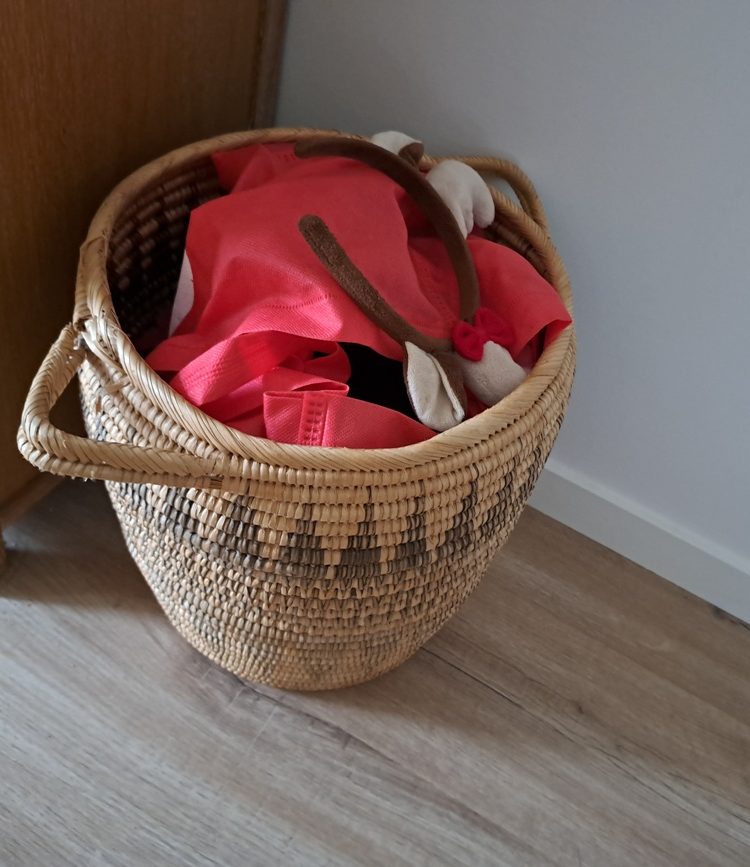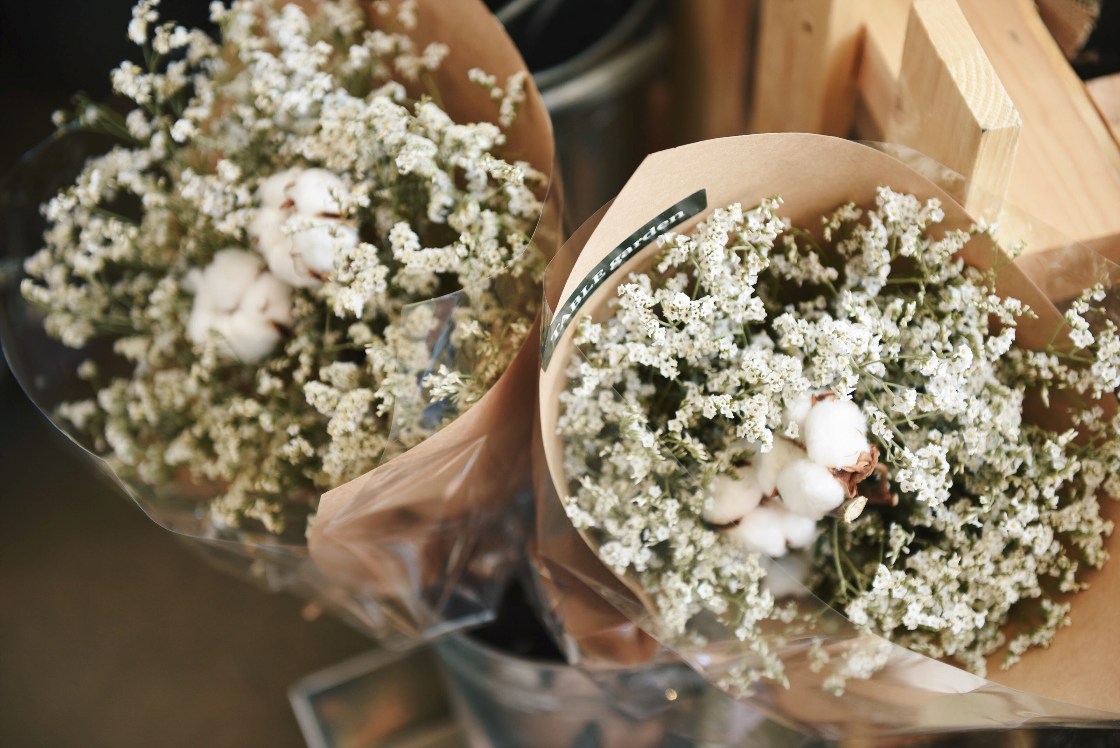Lavender is a beautiful flower that can be grown in many different climates. If you’re thinking about planting lavender, this guide will teach you everything you need to know to care for lavender! We’ll talk about the best time of year to plant lavender, how to prepare your soil, and what types of lavender plants are best for your region. By following these simple steps, you’ll be growing lavender in your own home garden in no time!
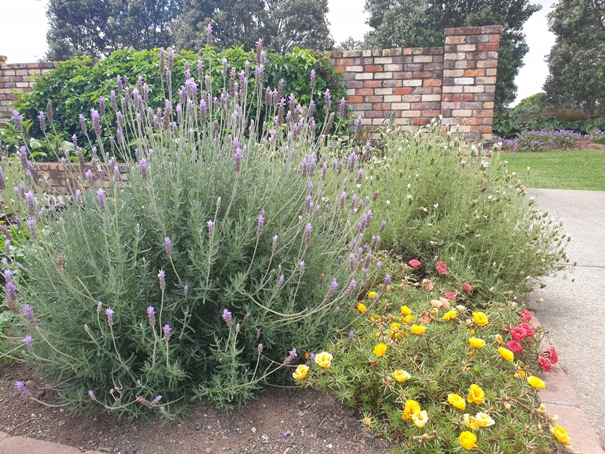
Popular Lavender Varieties
Lavender is a perennial herbaceous plant of the mint family, Lamiaceae. It’s native to the Mediterranean region and grows best in dry climates with mild winters.
The leaves are dark green on top and silvery-white underneath when young; they become bluish-green as they mature. The lavender flowers appear from early spring through late summer and may be purple, lavender, pink or white depending upon their variety.
Lavender is known to have at least 450 different varieties, but the most common varieties of lavender are: English Lavender (Lavandula angustifolia), French Lavender (Lavandula dentata), Spanish Lavender (Lavendula stoechas), and Lavandin (Lavandula hybrida)).
Below we talk about some of the key differences amongst these four common types so you can select which one will best suit your garden.
English Lavender ( Lavandula Angustifolia)
Zones 5 – 8
The English lavender is more durable and more winter hardy than the other varieties.
Their flower spikes come in distinct shades of purple, blue and white, and some have shades of pale pink or burgundy-coloured petals.
The leaves are narrow with smooth edges which make them easy to identify, and perfect for weaving into your projects or tying together as decoration.
The English lavenders are beautiful and come with the most fragrant scent. These attract butterflies and blooms from late spring until early summer.
Its flowers and leaves produce high quality essential oils with very sweet overtones instead of citrusy. It has a calming scent rather than a sharp unexpected tang.
This variety has been most closely associated with true “lavender” fragrances and is popular in the perfume industry than French or Spanish lavenders. It’s good for making balms, salves, perfumes, cosmetics, and topical applications.
It also tastes delicious when used in culinary purposes such as flavoring oils or butters.
Traditionally English lavender is available in a variety of cultivars: Hidcote, Lady, and Munstead.
Hidcote
‘Hidcote’ is known for its silvery-gray foliage and dark purple flowers that is fragrant all season long. This variety grows into an elegant, compact mounds formed with regular pruning – you can keep it dense by cutting back branches a few inches every few years or so!
Lavandula ‘Hidcote’ is a great choice for the front of a sunny perennial border, as well as in containers on your patio or deck. It also looks beautiful when mixed with other plants and flowers in a cottage garden setting. The plants are drought tolerant once established, so they’re perfect for regions with low rainfall.
Lady
Lady is an English variety that’s easy to grow from seed. It’s actually a low-growing shrub. This dwarf plant is a favourite in herb gardens as it can also be grown in tubs and containers, but it may require shelter for the winter in cooler climates.
Great for edging, perennial borders, low hedges, and low hedges, it produces a dense, compact mound of fragrant gray-green foliage topped with loose clusters of soft and fragrant lavender flower spikes.
It blooms consistently in its first year and makes an excellent cut flower whether fresh or dried.
Munstead
This variety is also popular because it stays compact, displays violet- purple flowers, and shows off attractive silvery foliage. Munstead also has a strong fragrance like “Hidcote”.
This small cultivar is perfect for containers and will thrive in a container garden. It’s also great for making potpourri or dried arrangements, because unlike other varieties where the flowers fade, this type retains its vibrant color.
To control its size, you should prune back eight inches in spring every three years; this will promote new growth while keeping things tidy.
This plant grows to a height of twelve to eighteen inches tall, and be about the same width.
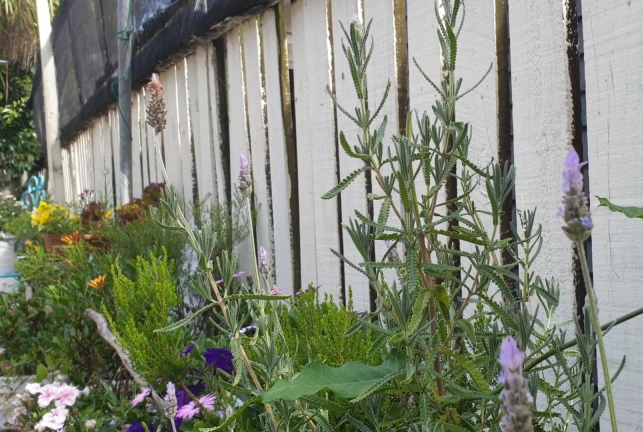
French Lavenders (Lavandula dentata)
Zones 5-10
Unlike most lavender, this plant is not an herb but rather a shrub. It grows best in pots or tubs and can be pruned into topiary shapes to create the perfect accessory for your garden!
French variety is drought tolerant and does well in sunny areas or partial shade. It prefers sandy, well-drained soils but may tolerate a wide range of soil types.
This fringed lavender has grey-green leaves that have finely toothed edges. It give off an elegant fragrance when broken apart. The scent is quite different from other lavender varieties as this one smells more like camphor and rosemary.
French lavenders bear short, upright flower spikes of lavender-mauve color in late spring and mid summer before falling away completely by themselves at maturity. The flowers can also be dried for use in arrangements or potpourri.
Spanish Lavender (Lavandula stoechas)
Zones 7 – 10
This variety offers not only offers a wonderful fragrance, but also attractive flower heads that are often short and topped with a set of bracts that look like rabbit ears or large petals. The rich dark purple pine-cone shaped flowers are reminiscent of tiny pineapples and gives an abundant show every year.
Often growing up to 18-24 inches in height, they’re excellent for small gardens, borders, and containers for a splash of texture.
This lavender thrives in hot weather and doesn’t need the cold to produce flowers.
This variety will tolerate droughts well. If you want the aroma and the attractive blooms of the English Lavender, but live in a hotter and drier climate, then this variety will be perfect for you.
Lavandin (Lavandula x intermedia)
Zones 5-10
This plant is a hybrid class of lavenders. It’s taller than the English lavender and is typically bigger with pale purple blooms on longer stems. It tolerates hot temperatures better but prefers to be kept drier.
While other varieties have sweet and floral scent, Lavandin is strong and more herbal. It’s commonly seen in fields across the Provence region of France where it’s grown commercially for perfumes, because of its higher oil content, faster growth, and easier harvesting of blooms.
How do you choose which lavender varieties to grow?
Lavender plant type depends on personal choices including flower’s colors, shape, or aroma of foliage. Grow it without issues by choosing the right variety that will thrive in your own garden.
Will your region’s climate be right for growing lavender?
Lavender plants are hardy, an everlasting herb that can last for several decades if grown at optimum temperatures. From its Mediterranean roots, lavender prefers warm sun and dry ground.
It can handle zones 5-8 with ease, but tender varieties will only grow in zones 9-10. Some varieties will thrive in colder areas as long as precaution is taken against humidity that may cause fungal diseases and rot.
English lavenders and their hybrid varieties are the most effective for colder climates. It can grow well in poor locations with the right winter precautions.
For places with very high temperatures, Spanish and French lavender are good, but protect from moist conditions and spaces without good air circulation.
Is your garden’s soil type good for growing lavender?
Soil is essential in successfully growing your lavender plants. If you don’t have good soil, your plant will be less likely to thrive and may die or get sick.
First, you’ll want to check the Soil PH levels and make sure that they’re within range for the plant’s growing needs. The soil needs to be well drained with a pH level between (pH) of around six or seven.
Second, if the soil is too acidic (anything below pH six), you can add lime to raise the PH level. The amount of lime that should be added will depend on the results of your soil test.
You will need to order a soil test kit or take it down to your local university or garden center for testing.
How much space do you need for your plant?
Lavender plants range in height. Compact plants or dwarf varieties don’t grow more than 12 in. (30 cm) and is perfect for pots. Other tall varieties easily reach 3 ft. in hight and are great candidates for hedges.
What color of evergreen do you want?
The Lavender’s foliage, which is evergreen in warm areas, will be on display for a longer period than the blossoms, so it should be considered as well. It ranges from various attractive shades of green, gray-green,and also silver. The leaves may be narrow like the English Lavender or toothed as the French Lavender.
What colors do you want in your garden?
Lavender flowers vary in size, shape and color. If you want to use the flower spikes for drying, the bud’s is important, not the petals, as they turn brown and fall off. The darker the calyx, the more stunning the dried flower will be.
In the garden, you can choose whatever color you like because lavenders come in many colors other than purple like blue, pink or white varieties.
How long do you want your blooms to last?
Lavender plants are summer blooming perennials with blooming seasons varying between varieties and cultivars. Generally speaking, Hidcote blooms about 1 month earlier than Lavandula x intermedia (hybrid cross between English Lavender and Portuguese Lavender). Some experience a second flush of flowers in the fall. Others, like Spanish Lavenders, may be in bloom all year around in ideal conditions.
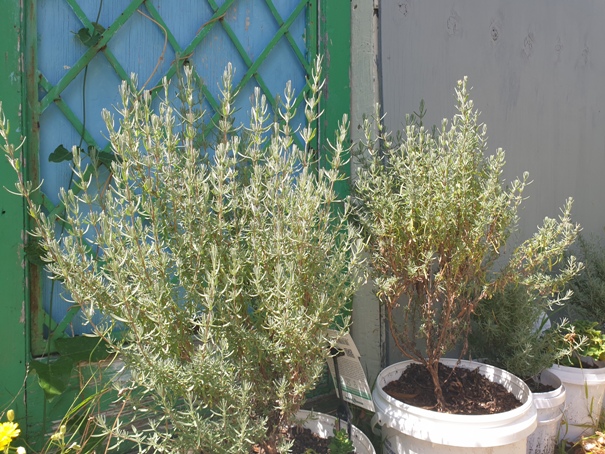
What will you use the Lavender plant for?
Many gardeners grow these plants for 3 main reasons: Decoratively, Culinary, and/or Medicinal purposes.
All lavenders are in fact edible, but only some are recommended for culinary use because of their strong flavor, like Hidcote, Lady, and Munstead.
For medicinal purposes, English lavenders (Lavandula angustifolia) and the lavindins (Lavandula x intermedia) are the varieties most often used. It acts as an anti-inflammatory agent that is used for headaches and stomach aches. It’s also known to promote relaxation, improves sleep, and decreases anxiety.
For decorative purposes, the English and Spanish plant varieties are preferred because of the showy blooms and the array of colors available.
Planting lavender: Step by Step Instructions
You can plant lavender in pots or directly into the ground, whichever suits you best. Follow these simple steps and you’ll be enjoying your own fragrant plants in no time!
Step One: If you’re planting directly into the ground then choose a dry, sunny spot in the garden bed that receives at least six hours of sunlight each day. The space should be large enough to accommodate the maximum growth of your choice of lavender variety. If you’re planting in a pot, choose a container that is at least 12 inches deep and has drainage holes in the bottom.
Step Two: You can make your own by mixing compost, sand and manure or organic fertilizer, in equal amounts. Otherwise, if you don’t mind spending more, it’s easier and faster to just dump a ready-made, high quality potting mix to fill the container.
If you’re using a garden bed, use a shovel or trowel to break up the dirt first. Amend heavy clay soils with organic matter to improve drainage before planting. Mix the soil ingredients in a wheelbarrow.
The soil should be loose enough for air circulation but tight enough to hold water without becoming soggy or compacted. What we’re looking for is well-drained soil to prevent root rot.
Step Three: Remove the plant from its container by gently squeezing the sides and bottom of the pot. If the plant is root-bound, tease the roots apart a bit before planting.
Step Four: Dig a hole in the soil that is wide enough to accommodate the lavender’s root ball and deep enough so that the top of the root ball will be level with or slightly above ground level when planted. This means that the planting hole should be about twice as wide and just as deep as the pot your lavender is in.
Step Five: Fill in around the plant with soil, tamping it down gently as you go to remove air pockets and secure the plant.
Step Six: Once your lavender is planted, water it well to help the soil settle.
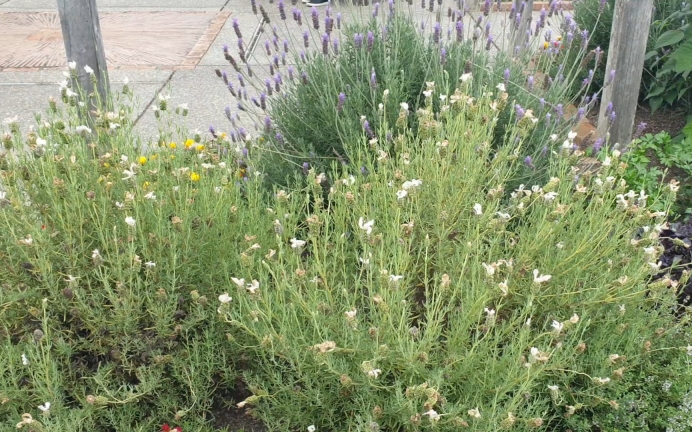
How to care for lavender plants
There are a few things you need to consider to ensure that your lavender would grow happily in your garden or pot for years to come.
Soil
The most important is the soil type. Lavender plants prefers sandy, well-drained soil. You can amend your soil with sand or gravel to achieve airy soil. use a traditional potting mix with plenty of sand mixed-in to ensure good drainage.
Lavender grows in low to moderate fertility soils so it’s okay to forgo fertilizers before planting. It also prefers neutral to somewhat alkaline or chalked soil. It improves output of lavender blooms and fragrance.
Temperature and humidity
Lavender plants can withstand various temperatures, but generally, cold and dampness kills lavender plants. Protect them during winter by placing or planting near brick walls for extra heat and security.
Damp roots can happen during the winter months and when there’s high humidity during the summer months. It’s important to make a lot of room in your garden to get air flow.
A very windy location is also not great, as lavender naturally thrives in still and hot summers.
Water
Lavender is drought-tolerant once established but it needs water when first planted to get established.
Lavender is a resilient flowering plant which is drought resistant once established. However, keep it hydrated for its first growing period. Water your lavender deeply once a week during the growing season. After this time, they can deal with extended droughts. Humid climates and excess moisture on older plants can cause fungal diseases or root rot.
Light
Lavender also needs full sun exposure. Make sure to plant it in a place that gets about six hours of full sun exposure which guarantees more buds and bigger, fuller shrubs.
They can’t tolerate shade so avoid planting them on a spot that is overshadowed or a tree.If you grow lavender under a shade, it might not produce flowers.
Fertilizers
Fertilize once a month with an all-purpose fertilizer , or once a year with an organic fertilizer such as compost, manure or fish emulsion. The plants don’t need regular feeding as high-fertility soils promote leggy, untidy growth. Lavender also doesn’t like nitrogen, so use low-nitrogen fertilizers. Don’t use organic mulch around the plants, as these maintain moisture around the trunk and lower branches.
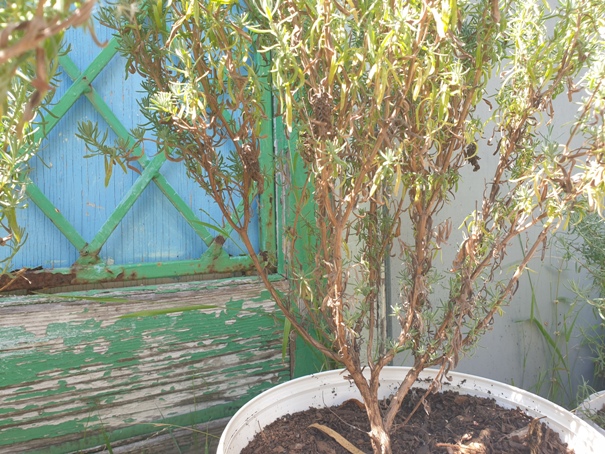
Pruning lavender
How to Prune Lavender?
For taller varieties, grab small bunches of the stems and, using clean, sharp scissors or secateurs, snip them off, removing approximately one third of the plant’s height or just several inches above the bottom two sets of leaves. For smaller varieties just trim or prune into new growth.
Try to maintain a good rounded shape, but don’t cut too close to the base of the old wood and woody stems, or the plant might struggle to overwinter.
When should you not prune lavender?
Don’t prune in areas with winter dieback until there is new green growth on the root. If you disturb the plant at this stage, the plant will not be able to recover.
When should lavender be pruned?
Spring pruning is recommended to preserve the shrub like form and encourage new growth. Prune twice a year, right after the first flowering and again in early summer, or maybe a few weeks later, after the last flush has faded.
What happens if you don’t prune lavender?
Pruning lavender every year is an important step to ensure a long-lasting plants. Otherwise, it will become a woody plant with a large, lanky, woody base. It looks unattractive and shortens the plant’s lifespan.
How to Harvest lavender
There are so many uses for lavender, but it’s more sought out for its aroma when its flowers are dried.
Harvest the flower stalks when about half of the flower buds have opened. Do it preferably in the morning hours when the oils are most potent and concentrated.
- Snip off the stems, cutting it as long as possible.
- Gather and tie into bundles with rubber bands
- Dry the bundles of lavender by hanging them upright upside up in an open area, but some place sheltered, ideally a cool area with enough airflow.
Lavender blossoms are also edible and delicious. They are suitable for salads, soups and stews, as seasonings baked in biscuits and brewed in teas.
The dried lavender can be stored in a sealed glass container somewhere cold and dark. You can also place them in a pouch for preventing mosquitoes. Try inserting these sachets in pillows to soothe you and get a restful sleep while you sleep.
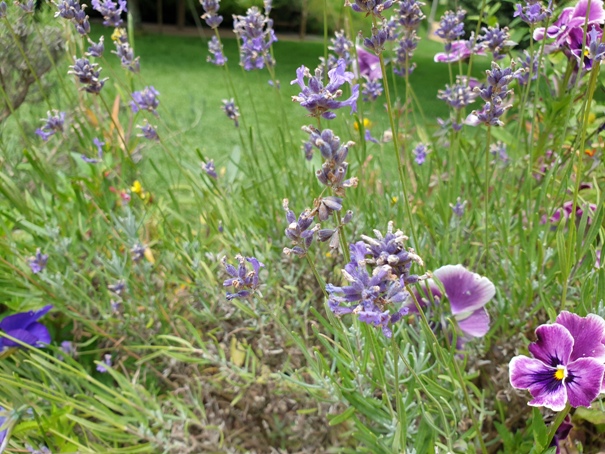
End of Season Lavender Care
Mulching plants in the fall will help protect them from freezing winters. Pile wood chips on the soil before the frost. It protects it from cold, but does not rot. Remove mulch by springtime.
Avoid using organic mulch around the plants, as these hold onto moisture which may affect the trunk and lower branches. Consider mulching it with gravel instead. It will also help in drying out the soil a little faster.
Pests & Diseases
Most lavenders are resistant to most pests and diseases but it can be susceptible to powdery mildew in humid climates. Do a little research on your specific climate to see if you need to take any precautions against powdery mildew.
Because of the plant’s strong scent, many pests (e.g. beetle and deer – will be deterred. In humid conditions, powdery mildew and various other fungi diseases may cause some problems. Keep in a dry area to avoid fungal disease causing bacteria to form.
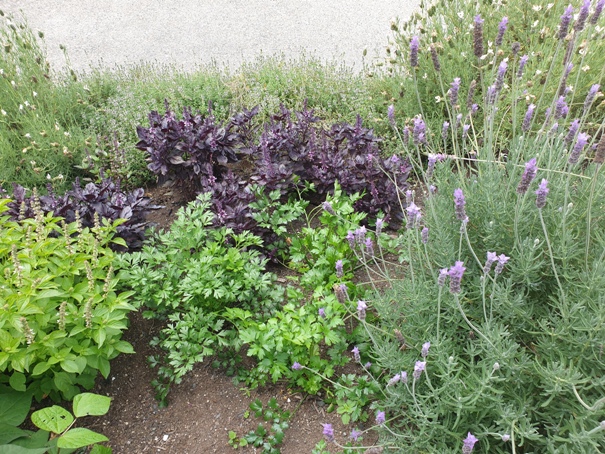
Related Questions
What is the best time of year to plant lavender?
Lavender can be planted in the garden at any time of year but the best time is in the spring or fall when it’s cooler and there has been adequate rainfall. You can also plant it after a hard frost, which will kill off any diseases that may be present on your plants.
When growing lavender in pots and containers, you can plant it anytime of year. The most important thing to remember is to choose those with good drainage holes to prevent wet feet.
Where is the best place to grow lavender?
The answer is – it depends on what you’ll want to use it for!
One of the best places to grow lavender it is in raised beds or the herb garden. It’s a great place to grow culinary herbs as well as other herbs that have medicinal or aromatherapy uses.
Grow lavender for excellent hedges or borders in the garden. Growing your plants this way will provide you with beautiful colours, perfume and interesting flower spikes to cut for vases indoors or fresh or dried bouquets. The purple blue flowers also attract bees, birds and butterflies to the garden.

